 |
 |
 |
| |
Estimating Lifetime Risk of a Diagnosis of HIV Infection Among MSM: United States, 2017-2021: it persists with racial disparities
|
| |
| |
CROI 2024 March 3-6 Denver
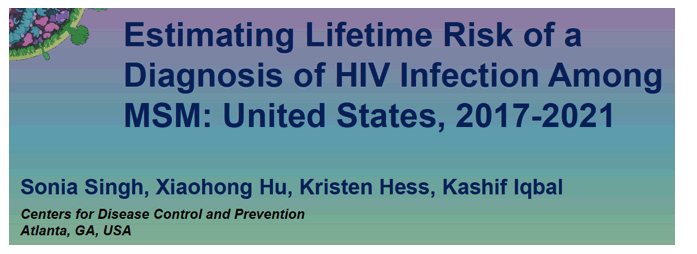
program abstract
Background: Estimates of lifetime risk are used to compare the burden of disease across populations. This method may be a useful tool for clinicians, outreach workers and policy makers when describing the burden of HIV since it can be more easily understood by the general population. We estimated lifetime risk of a HIV diagnosis among MSM by race/ethnicity and age.
Methods: HIV diagnosis, mortality and census population data were used to derive lifetime risk estimates and 95% confidence intervals of HIV diagnosis among MSM by race/ethnicity and age. HIV diagnoses data reported to the National HIV Surveillance System (NHSS) by December 2022 were used. The numbers of HIV diagnoses (NHSS) and non-HIV deaths (National Center for Health Statistics mortality data) during 2017−2021 were used to calculate probabilities of a HIV diagnosis at a given age, conditional on never having received a HIV diagnosis prior to that age using a competing risks method. The lifetime risk estimate is the cumulative probability of HIV diagnosis from birth. Comparisons were made to findings from a 2010−2014 analysis. The analysis was conducted in DevCan 6.7.3.
Results: During 2017−2021, the lifetime risk of a HIV diagnosis among MSM was 1 in 7 overall. Lifetime risk among MSM was 1 in 3 for Black/African American persons, 1 in 5 for Hispanic/Latino persons, 1 in 7 for Native Hawaiian/other Pacific Islander persons, 1 in 11 for American Indian/Alaska Native persons and 1 in 15 for Asian persons and White persons. Lifetime risk improved for all races/ethnicities except for American Indian/Alaska Native, Hispanic/Latino and Native Hawaiian/other Pacific Islander MSM which stayed the same, compared to 2010−2014 (Table). For 10-year age-conditional risk of a HIV diagnosis, the highest 10-year risk experienced overall and for all races/ethnicities was at age 20, with risk decreasing with age. Compared to 2010−2014, improvements occurred for some but not all race/ethnicities. Estimating missed diagnoses in 2020 due to COVID-19, the unadjusted lifetime risk (14.60%) was 2.6% lower than the adjusted risk (14.98%) among MSM.
Conclusion: Overall, lifetime risk of HIV diagnosis improved among MSM, but this decrease was not seen across all races/ethnicities. The Ending the HIV Epidemic in the U.S. initiative is designed to scale up key HIV prevention and treatment strategies and is also working to address disparities. There is need for continued progress in HIV prevention and treatment since disparities persist by race/ethnicity among MSM.
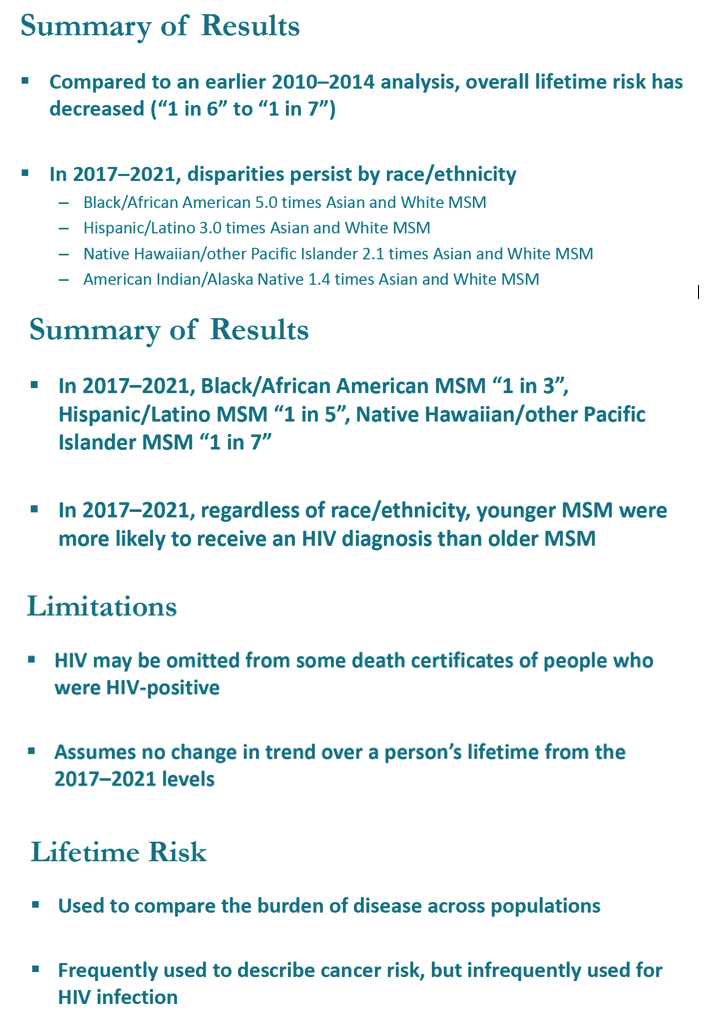
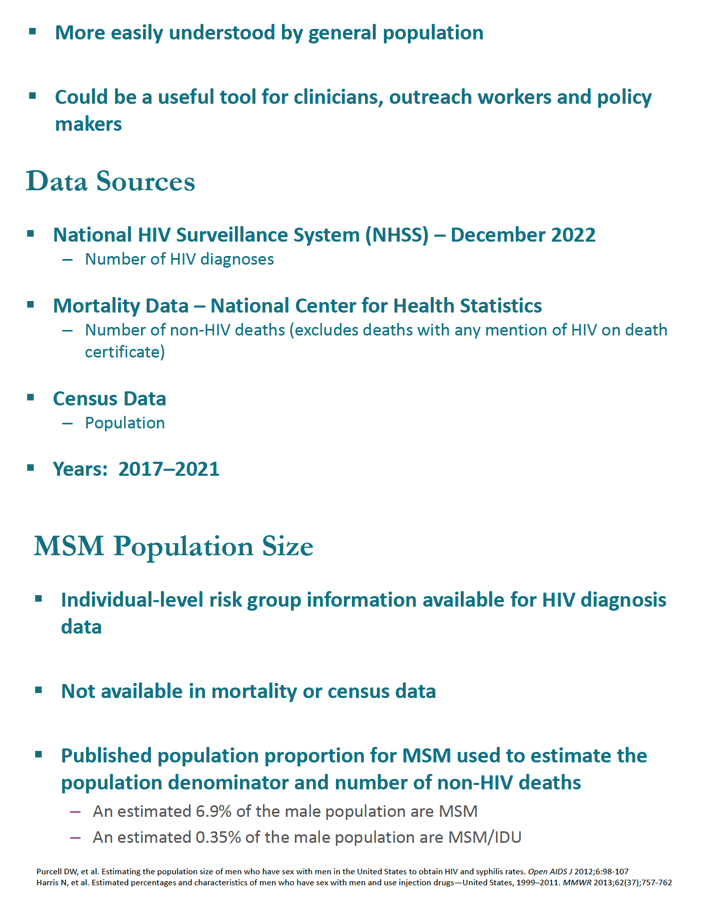
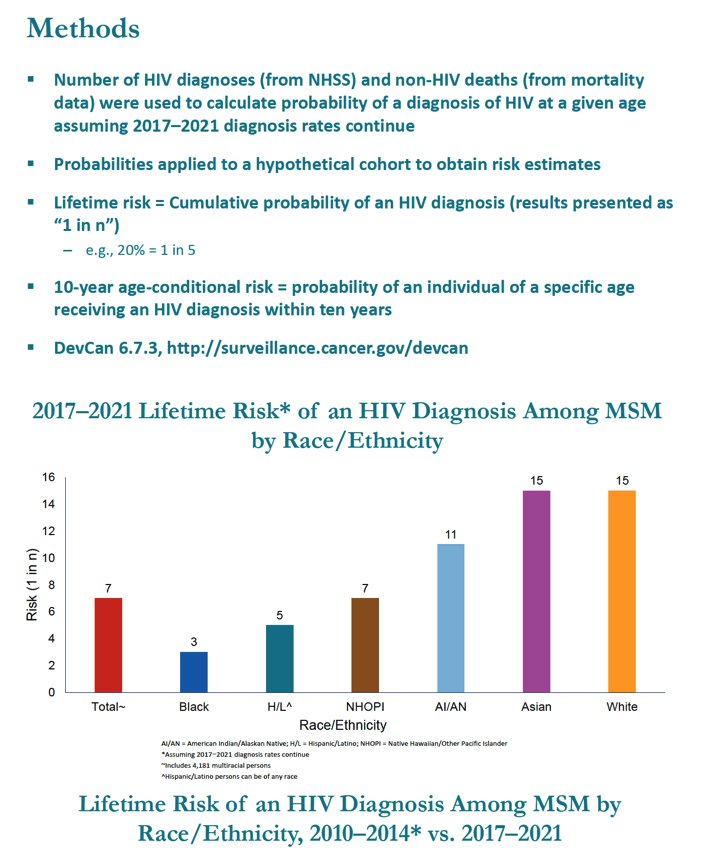
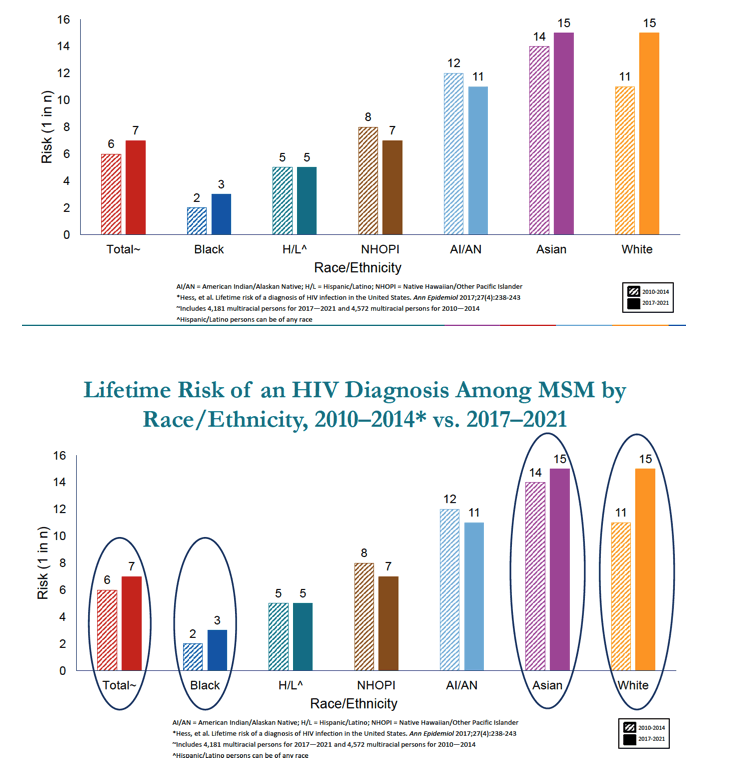
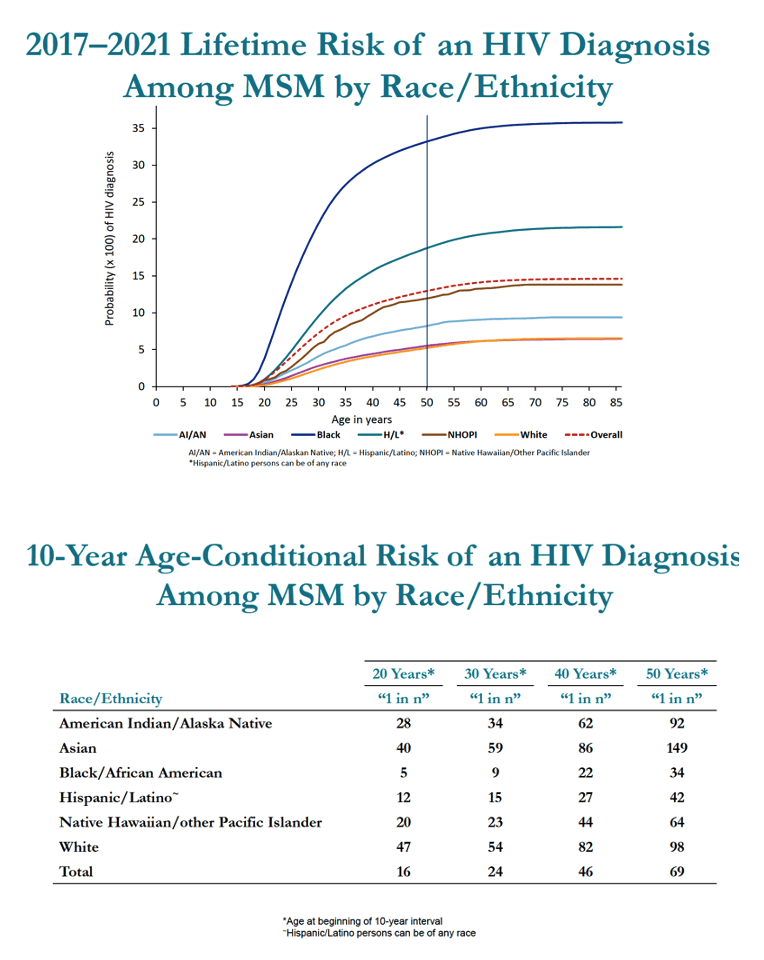
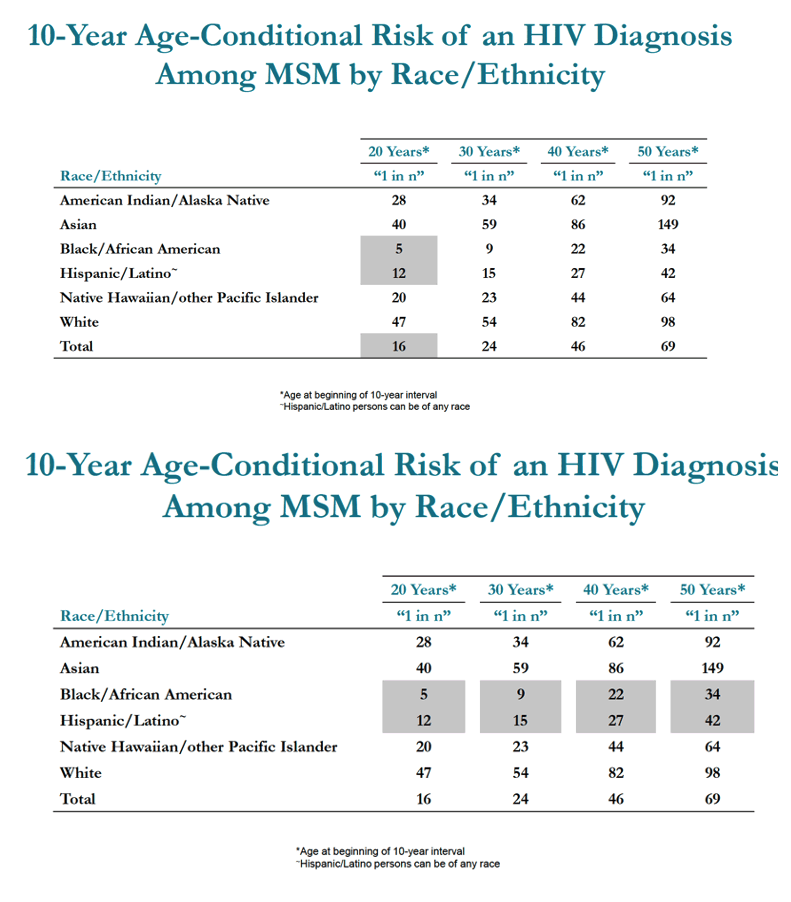
|
| |
|
 |
 |
|
|